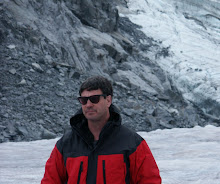
Martha has painted five images of our American Bulldog puppy, Bolt, so far. He is nine months old now and at about 90 lbs no longer a puppy. But this painting captures the cute and cuddly puppy stage perfectly. That stage didn't last long. Bolt quickly moved from cuddly to demonic. It is a good thing to have a demon in your life. Such a creature reminds us that life isn't one big bowl of cherries. Life is a trail of tears or worse, a tsunami of tears. Sometimes simply keeping your head above water is the most that can be expected.
The only thing worse than all these tears would be no tears at all. The only thing worse than a cuddly puppy turning into a demon is for him to always be a puppy. If life were always sunshine and cuddly puppies, then we would all die of boredom. This painting reminds me to smile through the tears and ruefully rub the bruises on my body caused by my young bulldog using his head like a wrecking ball.







.jpg)









































